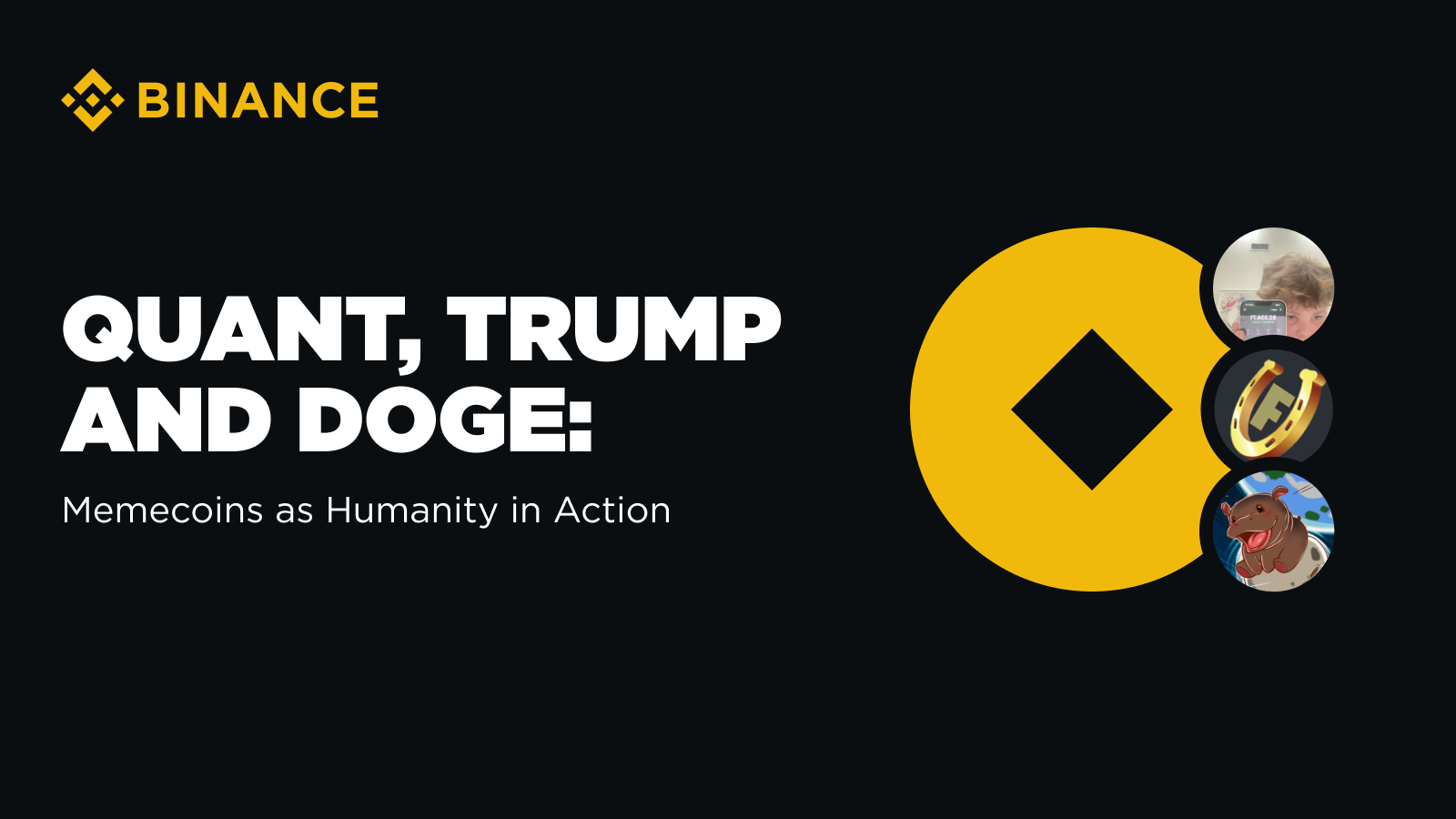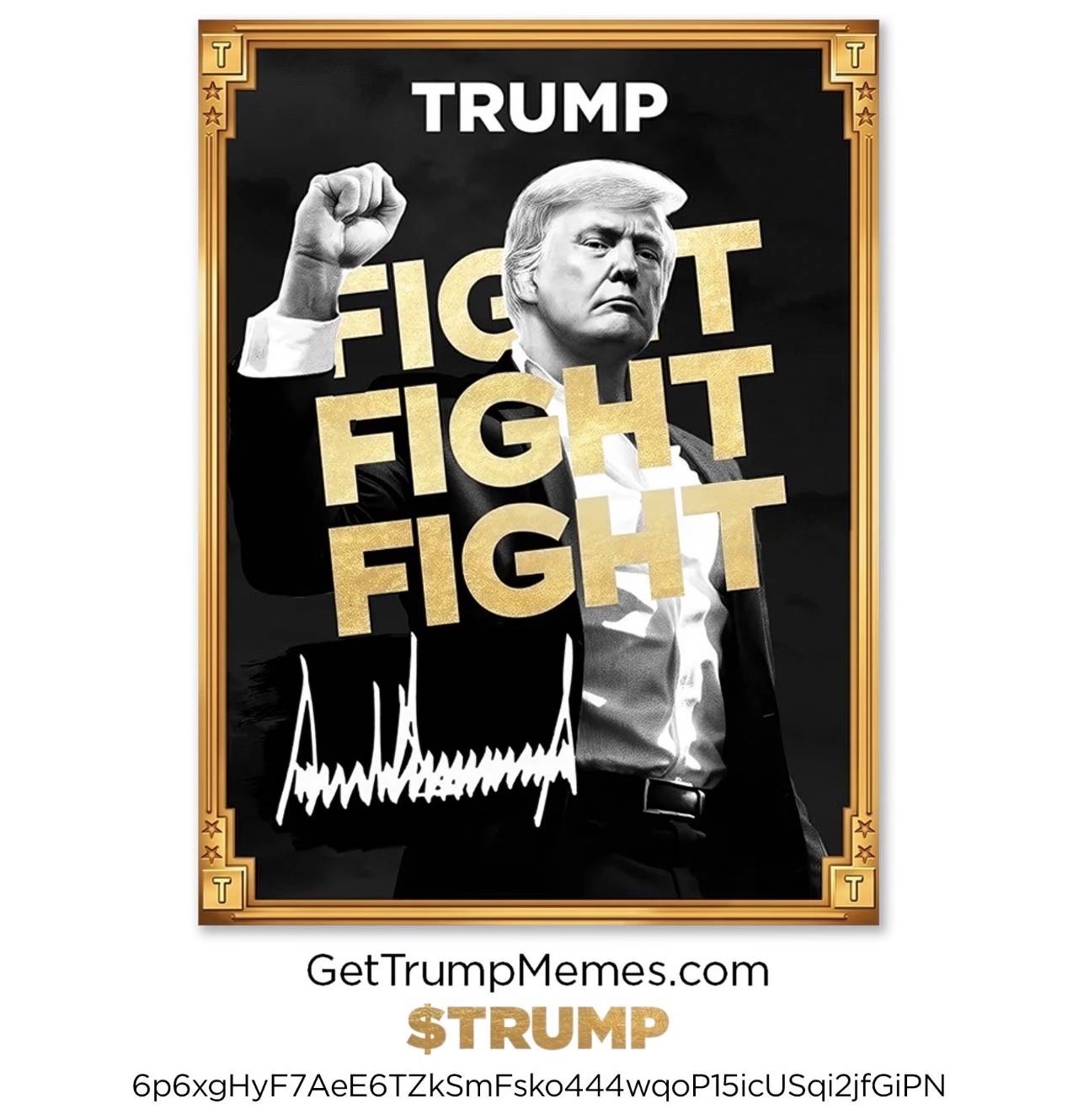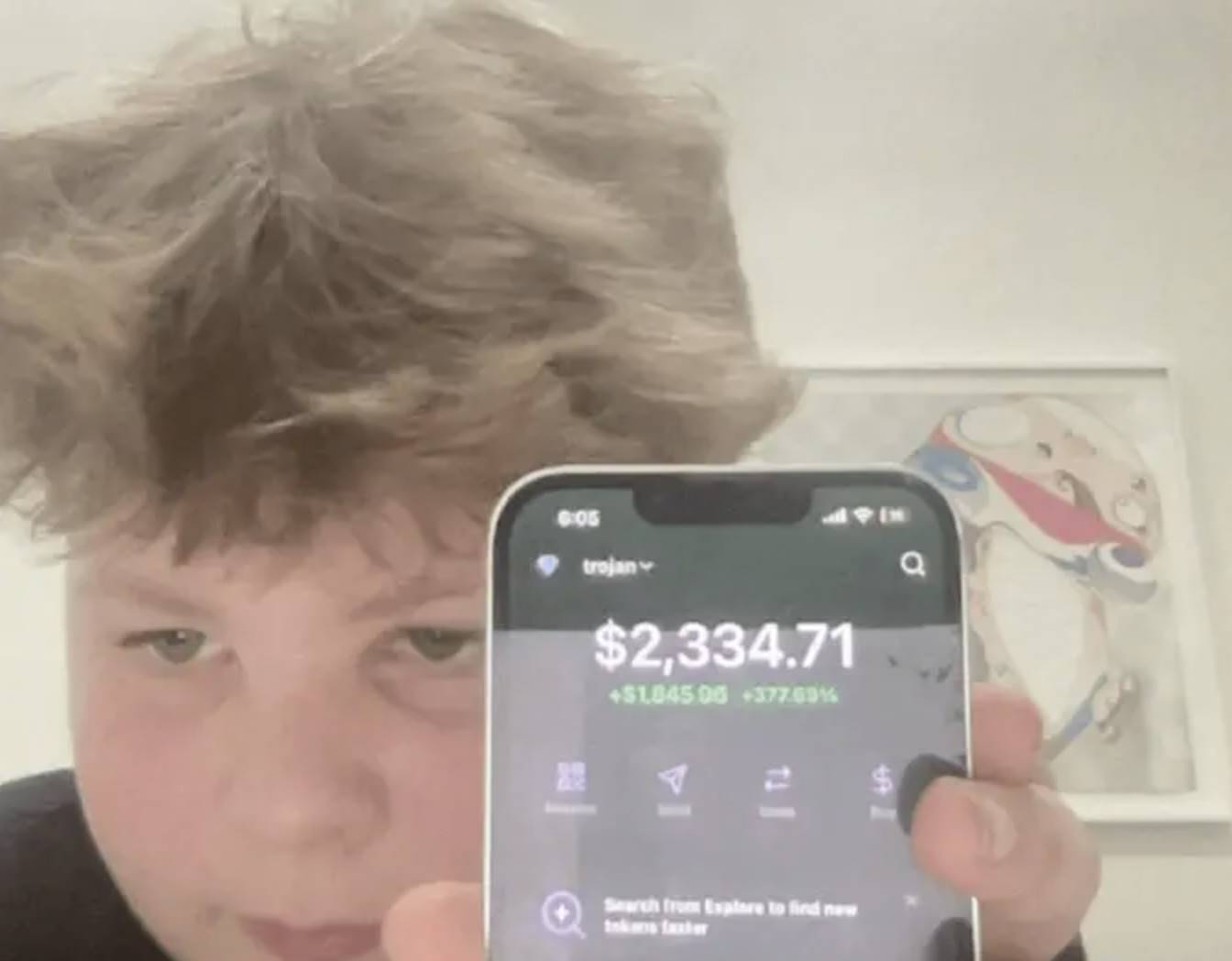Author: Binance
Compiled by: TechFlow
Key Points
- Like the recently launched presidential $TRUMP token, Memecoin is a cryptocurrency that originated from Internet culture. Its development is inseparable from the high participation of the community and it usually gains attention through humor and rapid spread.
- This article will delve into the recent QUANT Memecoin incident and, in conjunction with some other well-known cases, analyze the human nature and cultural logic behind the Memecoin phenomenon.
- The peculiarity and high volatility of Memecoin actually reflects the wonderful irrational side of human behavior.

If there’s one thing that looks like it came straight out of the satire news, it’s President Trump launching his own memecoin, $TRUMP. The token launched just three days before his inauguration, promising “huge” gains and a “bright” future — after all, everything he touches is “the best” in his dictionary. With a series of patriotic-themed memes, NFTs of his signature emojis, and the slogan “the most stable coin ever,” $TRUMP has set the cryptocurrency community on a frenzy. Currently, the token has soared by more than 10,000%, reaching a fully diluted valuation of $71 billion, an astonishing result that even Binance co-founder CZ was confused. Just two days later, Trump’s wife Melania also launched her own $MELANIA Memecoin.
Whether these tokens will become the next financial phenomenon or simply become a joke is still to be determined, but one thing is certain: when the first couple of a superpower are involved, Memecoin has clearly ceased to be a niche curiosity and has become a full-blown cultural phenomenon.

Memecoin of the 45th President of the United States
Source: X
Today is the best time to learn more about Memecoin. This article will take QUANT Memecoin as an example to explore the success logic and cultural significance behind it.
QUANT: How a 13-year-old started a small financial revolution online
The story begins, like most Memecoin origins, with a joke.
On an ordinary evening in November 2024, a 13-year-old Gen Z streamer sat at his desk, broadcasting live to a small but loyal audience. His "weapons" include: a sarcastic sense of humor, a keen insight into crypto trends, and a keen interest in memes. His "big plan"? Using the Solana-based platform Pump.fun, he launched a memecoin called QUANT. On this platform, the process of creating a cryptocurrency is almost as easy as signing up for an Instagram account.
In just a few minutes, QUANT was officially launched. The young creator showed all his talents as a savvy crypto prankster. When a group of token holders, attracted by the gimmick of "the next hot Memecoin project", rushed to buy QUANT, he quickly executed the classic operation in the cryptocurrency field - "Rug Pull". He sold 51 million tokens for $30,000 worth of SOL. Then, he smiled smugly in front of the audience and closed his laptop like a villain in a low-budget heist movie.

Source: Chaincatcher.com

This little guy raised his middle finger provocatively before the Rug Pull
Source: Chaincatcher.com
In the world of Memecoin, Rug Pulls are nothing new. However, what happened next turned QUANT from a short-lived joke into an unprecedented mini financial and cultural revolution.
Rather than being quietly accepted as the teenager might have expected, this time the Rug Pull sparked outrage in the community, and angry traders decided to take revenge in typical Memecoin fashion: they worked together to drive the token’s value to new highs.
Through collective action, the QUANT community pushed the token's market value to $22.6 million in just 15 hours. The token that the teenager sold for $30,000 instantly rose to a value of nearly $4 million. Ironically, the teenager who planned the Rug Pull could only watch his token become the hottest Memecoin at the moment, but could not profit from it.
Meanwhile, the cryptocurrency social world — Twitter, Reddit, and Telegram — was instantly flooded with jokes, memes, and conspiracy theories. During the day, #QUANT became a trending hashtag, perfectly embodying all the characteristics of the Memecoin market: absurd, community-driven, and extremely unpredictable.
As the hype around QUANT grew, cryptocurrency enthusiasts moved quickly to do what the internet does best: They revealed the teenager’s true identity. His personal information, including that of his family, was leaked online. What started as a joke financial prank turned into a cautionary tale about the dark side of Memecoin fame.
However, even in the face of such strong backlash, the 13-year-old boy was not afraid. Instead of stopping, he intensified his efforts and launched subsequent tokens, such as $Lucy named after his dog and a token called $Sorry, to continue to profit from the speculative boom of Memecoin. By the end of 2024, the teenager had become a classic anti-hero in the Memecoin world: smart and adventurous, admired and hated.
For a brief moment in November 2024, QUANT looked unstoppable. But like all Memecoins, its value fluctuations are as unpredictable as the passion of the community behind it. After a brief period of glory, the price of QUANT began to fall sharply. From its all-time high of $0.0633 to today's $0.00075, the value has shrunk by a staggering 98.8%.
Ultimately, Memecoin rises and falls entirely on community interest. Once the furor and buzz around the Rug Pull died down, so did the market’s interest. Those traders who cashed out in time during the QUANT craze made a killing, while latecomers had to bear the consequences of the crash. Today, QUANT has become a piece of digital history—one that showcases both the potential of Memecoin and its risks.
Traveling through the psychedelic jungle of Memecoin
In this Internet world full of chaos and memes, Memecoin has become one of the most fascinating social phenomena. Unlike traditional currencies that symbolize economy, stability and rules, Memecoin survives on humor, virality and community-driven chaos.
Memecoin is a unique cryptocurrency that is more a product of Internet culture than a product of technological innovation. Unlike Bitcoin, which is known as "digital gold", or Ethereum, which supports decentralized applications, Memecoin is essentially a digital joke, but it has been transformed into a financial meme by the power of the community. Its value does not come from practical use or scarcity, but from the community's shared sense of humor and trust in this joke.
The story of QUANT is just one example of a phenomenon in which tokens are initially created for fun, but often transform into popular tools for speculative trading through the magic of their communities.
At the heart of every Memecoin is its community. From obscurity to price “moons” (or more often, to the “trash heap”), the fate of a Memecoin depends entirely on the collective enthusiasm of its believers. Platforms like Pump.fun further lower the barrier to participation. Through its simple and easy-to-use interface, anyone can create a token, customize its brand image, and share it to their social circles.
Meanwhile, the biggest craze took place on X and Discord, platforms where Memecoin enthusiasts gathered to swap funny memes, plot the next moonshot, and unabashedly promote their new favorites. It was these platforms and their chaotic communities that made Memecoin a force that was both absurd and impossible to ignore: it was part joke, part economic experiment, and part true reflection of internet culture.
The launch of $TRUMP Memecoin is a textbook example of how Donald Trump has transformed himself into a symbol and phenomenon. He has leveraged his global influence as a politician, celebrity, and entrepreneur, demonstrating a unique ability to stay relevant in the age of Internet virality. This Memecoin may further solidify his status as a cultural disruptor, adding to his legacy in an era where influence is traded as currency.
Let’s take a look at another popular Memecoin in 2024: FARTCOIN. This token was originally just a humorous poke at crypto culture, but it unexpectedly became a real market player. With a hilarious name, FARTCOIN attracted a group of loyal fans and turned this token into a cultural symbol. Its success once again proves the charm of Memecoin: it does not require logic, it just needs to make people laugh.
Another shining star in 2024 is MOODENG, whose rise is inseparable from the large amount of funds donated by Ethereum co-founder Vitalik Buterin to wildlife conservation. Named after a pygmy hippopotamus that became popular online in Thailand, this token cleverly takes advantage of the Internet craze and the charitable behavior of KOLs. This powerful combination deeply touched the hearts of the crypto community.
When talking about Memecoin, we have to mention their "ancestor": Dogecoin. What started out as a humorous tribute to the Shiba Inu Meme has now grown into a cryptocurrency empire. Dogecoin's journey from an online joke to a mainstream currency is the best digital example of the power of community belief.
Elon Musk, the most famous supporter of Dogecoin, has injected his signature unique style into it. From claiming that Dogecoin will be used as the currency on Mars to proposing the establishment of an agency called the "Department of U.S. Government Efficiency (DOGE)" to manage the federal budget, Musk's support has transformed Dogecoin from a simple online joke to a cultural symbol of the contemporary digital age and a symbol of technological dreams.
The Golden Rule of Memecoin
For the average user, participating in Memecoin is more like a high-stakes experiment in collective psychology. The first principle that users need to keep in mind is that these tokens completely subvert traditional investment logic. Their success does not rely on practicality or fundamental value, but on viral popularity. The success or failure of a Memecoin depends entirely on whether it can capture the imagination of the Internet and ride on jokes, trends, and moments that define online culture.
The second principle is that the value of a Memecoin depends on the community that supports it. A group of passionate and loyal supporters can make any Memecoin rise, whether it is a sincere project or a half-joking idea. Take QUANT, for example. Its rapid rise was not due to technological innovation, but to the collective anger of the community. After the founder's Rug Pull, the community's determination drove the price of the token, and this shared enthusiasm (even sometimes out of resentment) highlighted the central role of the community in Memecoin valuation. However, as the story of QUANT reveals, this heat is often fleeting. Once the excitement fades, the value of the Token will also decline.
Finally, this highly volatile ecosystem perfectly illustrates the high-risk, high-reward nature of Memecoin. Memecoin is known for its wild price swings, which can double a small investment overnight or cause investors to lose a lot of money in an instant. For example, PENGU, the native token of the Pudgy Penguins NFT series, skyrocketed 581% in price within 24 hours of its first listing on an exchange, mainly due to enthusiastic community support and a carefully planned airdrop event. However, by mid-January 2025, PENGU was trading at around $0.0316, down 54.8% from its all-time high of $0.06845 set on December 17, 2024.
The chaotic nature of the Memecoin market inevitably raises some serious ethical questions. When a 13-year-old can issue tokens at will and make a profit, what does this mean for the crypto market? The story of QUANT reveals that this field urgently needs clearer boundaries, both from a regulatory perspective and from an ethical perspective on who is qualified to create and promote digital assets.
In the Memecoin market, every trader is like an observer in a world dominated by the unpredictable forces of virality, humor, and collective action. Here, finance and Internet culture are intertwined, and the value of an asset depends not on its actual function but entirely on how strong the public's belief in it is.
Through the lens of Memecoin, we can glimpse the power of collective belief, the far-reaching impact of viral culture, and the democratization of financial participation. The essence of these tokens is a microcosm of human behavior - full of uncertainty, cooperation, and endless creativity.















